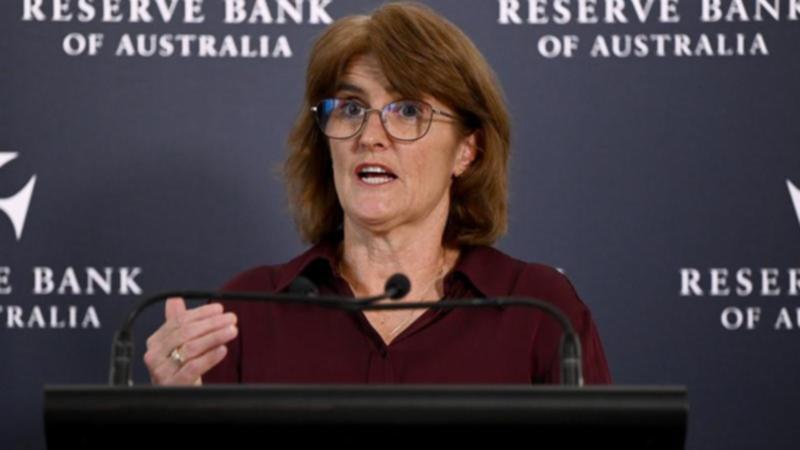Interest rates: Here’s what experts say the Reserve Bank will do next after core inflation cools

Australia’s core inflation unexpectedly decelerated last quarter, supporting the Reserve Bank’s view that prices will gradually ease and prompting traders to boost bets on an interest-rate cut.
Traders abandoned bets on rate hike at the RBA’s meeting next week after the closely-watched trimmed mean measure, which smooths out volatile items, climbed 3.9 per cent in the second quarter from 4 per cent in the prior period, Australian Bureau of Statistics data showed Wednesday.
The consumer price index rose 3.8 per cent in the three months through to the end of June from a year earlier, matching estimates.
Sign up to The Nightly's newsletters.
Get the first look at the digital newspaper, curated daily stories and breaking headlines delivered to your inbox.
By continuing you agree to our Terms and Privacy Policy.The currency fell as much as 0.8 per cent and yields on policy-sensitive three-year government bonds declined 23 basis points, while stocks surged. Traders are now pricing a 66 per cent chance of a rate cut in December.
Annual trimmed mean inflation slowed for a sixth consecutive quarter, down from a peak of 6.8 per cent in the fourth quarter of 2022. That disinflationary impulse is likely to boost confidence among policymakers that they can remain on a “narrow path” of maintaining job gains while bringing the economy in for a soft landing.
“There will likely have been a huge sigh of relief at the RBA,” said Su-Lin Ong, Sydney-based chief economist at Royal Bank of Canada.
“It will still likely debate a rate hike next week but will deliver a steady rate verdict and continue to signal vigilance with returning inflation to target the priority.”
The RBA has raised rates by less than global counterparts as it worried about the capacity of heavily-indebted households to meet significantly higher mortgage repayments. The cooling in prices suggests the central bank is on track to meet its goal of returning price gains to the 2 to 3 per cent target late next year without requiring further tightening.
“While we think a rate hike will be on the table at the August board meeting, our bet is that the RBA will opt to remain in a high-for-longer holding pattern for now,” said Bloomberg economist James McIntyre.
Australia’s policy caution has left it near the back of the global cycle given the RBA had refused to rule out hikes at a time when some peers are already easing. US The Federal Reserve is likely to lay the groundwork for a September pivot at this week’s meeting. The Bank of Japan is an outlier, with Bloomberg Economics predicting a hike on Wednesday.
“The market will now think the RBA can converge closer to peers on the policy rate side,” said Tim Baker, strategist at Deutsche Bank.
The RBA meets to discuss monetary policy on August 5-6 and will also publish updated economic forecasts with Tuesday’s decision. The CPI data follows stronger-than-forecast jobs growth.
A separate ABS release on Wednesday for Australian retail sales volumes in the second quarter posted a decline of 0.3 per cent, underscoring the pressure on household finances from higher borrowing costs.
The CPI data “should put to rest the tired notion that the RBA should lift rates, an act that would do nothing but tempt a recession,” said Stephen Smith, a partner at Deloitte Access Economics. “Australian mortgage holders and businesses should breathe a sigh of relief.”
The strength in recent economic and partial price data had raised questions over whether policy is sufficiently restrictive. Just last month, governor Michele Bullock reiterated the rate-setting board isn’t ruling anything in or out after leaving the benchmark at a 12-year high of 4.35 per cent.
The RBA has held rates since a surprise tightening late last year, while highlighting that aggregate demand still exceeds the economy’s supply capacity.
Wednesday’s inflation report also showed:
- The most significant contributors to the June quarter rise were housing, up 5.2 per cent from a year-ago, and food and non-alcoholic beverages, 3.3 per cent higher.
- Fruit and vegetables rose as “unfavourable growing conditions drove higher prices for grapes, strawberries, blueberries, tomatoes and capsicums. “This was the highest quarterly rise for fruit and vegetables since 2016,” said Michelle Marquardt, ABS head of prices statistics
- Annual inflation for non-tradables was 5 per cent, unchanged from the first quarter
Bloomberg
